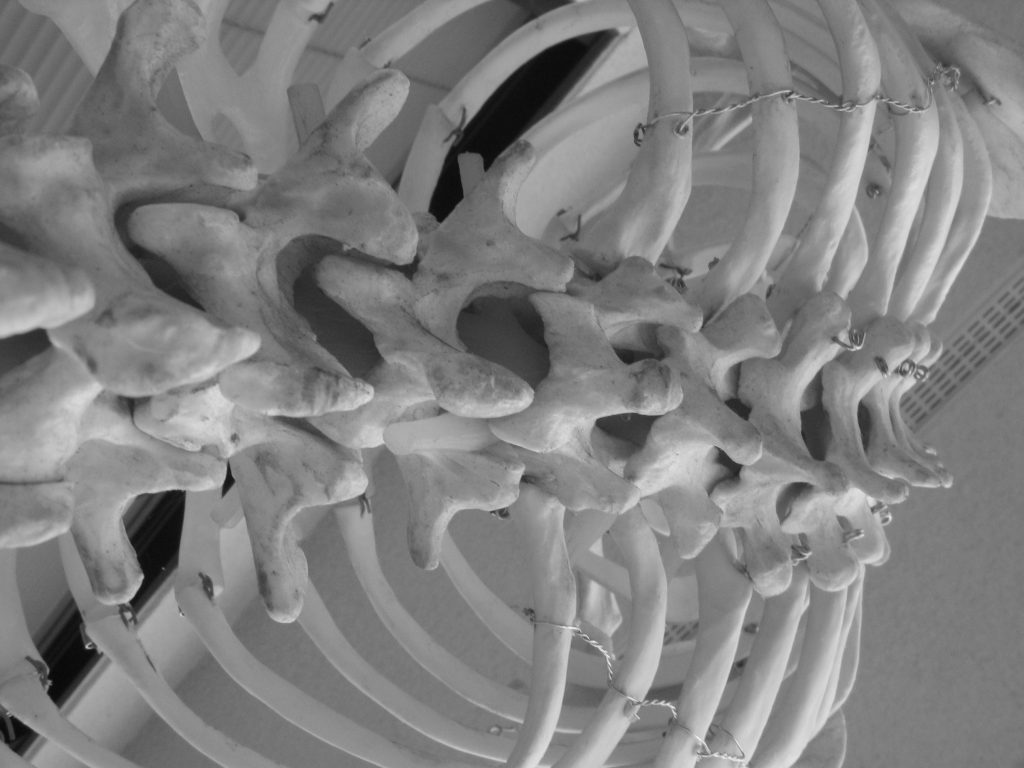 Over the last few years, we have all seen the videos of police arrest that seem to involve excessive methods. These videos stoke controversy and encourage a discussion on what constitutes “excessive force” during an arrest. Even with video evidence, the actions of the police and the arrestee are subject to multiple interpretations. The search for the truth becomes even harder when the arrest is not videoed and the participants all give different testimony on those events. The following case out of Shreveport Louisiana demonstrates how the Civil court system handles differing testimony on allegations of excessive force during an arrest.
Over the last few years, we have all seen the videos of police arrest that seem to involve excessive methods. These videos stoke controversy and encourage a discussion on what constitutes “excessive force” during an arrest. Even with video evidence, the actions of the police and the arrestee are subject to multiple interpretations. The search for the truth becomes even harder when the arrest is not videoed and the participants all give different testimony on those events. The following case out of Shreveport Louisiana demonstrates how the Civil court system handles differing testimony on allegations of excessive force during an arrest.
In July of 2012, Bobby Byrd filed a lawsuit as a result of what he alleged was the use of excessive force during an arrest against Roy Shore of the Bossier Police Department and W.W. Lindsey and Robert Gordon of the Shreveport Police Department. Mr. Byrd’s excessive force claims revolve around a police chase of Mr. Byrd. It all started when Detective Gordon, believing that the vehicle that Mr. Byrd drove at the time matched a vehicle tied to a string of burglaries, attempted to pull over Mr. Byrd. Instead of stopping, Mr. Byrd drove away from the police officer, crossing from Shreveport to Bossier. Eventually, Mr. Byrd abandoned his vehicle at the Red River and proceeded on foot into the Red River. The police, with a police canine in hand, continued after Mr. Byrd. During this pursuit, the riverbank caved in, causing the police canine to fall into the river. The officer holding the canine, Officer Yarborough of the Shreveport Police Department, released the canine’s leash. The police canine, instead of listening to the Officer Yarborough’s order to return to the riverbank, pursued Mr. Byrd and bit him. Mr. Byrd fought back, disorienting the police canine and causing the canine to retreat back to the riverbank. The officers eventually retrieved Mr. Byrd from the river.
It is at this point that the stories of Mr. Byrd and the police officers diverge. Mr. Byrd claims that after returning to the riverbank he fully complied with the officers’ requests and that after the police officers handcuffed him they proceeded to strike him. In contrast, the police officers claim that Mr. Byrd did not comply with their instructions and that Mr. Byrd reached towards his waistband which was submerged underwater. The officers, believing that Mr. Byrd could have a weapon in his waistband, deployed “distraction strikes” in order to subdue Mr. Byrd. Regardless of the stories, Mr. Byrd suffered multiple injuries: “a dog bite wound, wounds to the forearms, a broken nose, a broken orbital floor requiring surgical reconstruction with a titanium plate, kidney trauma, and abrasions to his ribs” because of this incident.
 Is it cruel and unusual punishment for a prison to not provide an extra pillow and mattress to an injured prisoner? According to Fifth Circuit Court of Appeals, it is not. It is unsurprising that inmates often complain about mistreatment from prison officials. But what is required for a prison official’s conduct to be considered cruel and unusual punishment?
Is it cruel and unusual punishment for a prison to not provide an extra pillow and mattress to an injured prisoner? According to Fifth Circuit Court of Appeals, it is not. It is unsurprising that inmates often complain about mistreatment from prison officials. But what is required for a prison official’s conduct to be considered cruel and unusual punishment? Louisiana Personal Injury Lawyer Blog
Louisiana Personal Injury Lawyer Blog


 Decisiveness can be an excellent quality, especially in a judge. Court dockets are usually quite full and it can take a very long time for cases to be resolved. Whenever there is a confusion over which law to apply, however, patience is the greater virtue. In a lawsuit, lawyers will often request relief under various laws in hopes that one will bring success. In a recent case out of Venice, Louisiana, the Louisiana Fourth Circuit Court of Appeal reminded an Office of Workers’ Compensation Judge (“WCJ”) just how important patience is when issuing an order in a case with competing theories of recovery.
Decisiveness can be an excellent quality, especially in a judge. Court dockets are usually quite full and it can take a very long time for cases to be resolved. Whenever there is a confusion over which law to apply, however, patience is the greater virtue. In a lawsuit, lawyers will often request relief under various laws in hopes that one will bring success. In a recent case out of Venice, Louisiana, the Louisiana Fourth Circuit Court of Appeal reminded an Office of Workers’ Compensation Judge (“WCJ”) just how important patience is when issuing an order in a case with competing theories of recovery.  Accidents in the workplace can rob one of the ability to work or even do simple daily tasks. The system of workers’ compensation exists to ensure that injured workers are compensated for their injuries. However, certain rules exist to ensure money is distributed efficiently. In a recent case out of Opelousas, the Louisiana Third Circuit Court of Appeal confronted the rules governing permanent or temporary disability status.
Accidents in the workplace can rob one of the ability to work or even do simple daily tasks. The system of workers’ compensation exists to ensure that injured workers are compensated for their injuries. However, certain rules exist to ensure money is distributed efficiently. In a recent case out of Opelousas, the Louisiana Third Circuit Court of Appeal confronted the rules governing permanent or temporary disability status.  Getting seriously injured on the job is always a terrible experience, but what if it is unclear for purposes of a lawsuit who you even work for? You know that someone owes you compensation for your injuries, but in this recent case out of Natchitoches Parish that “someone” may not be where your employment application was filed.
Getting seriously injured on the job is always a terrible experience, but what if it is unclear for purposes of a lawsuit who you even work for? You know that someone owes you compensation for your injuries, but in this recent case out of Natchitoches Parish that “someone” may not be where your employment application was filed.  “My neck, my back, my neck and my back” is a cliche that has been used in television shows and movies when someone gets hurt in an accident and likely tends to file a lawsuit. Although Caddo Parish, Louisiana woman, Ruth Toliver, may not have used the exact phrase, she did fall on the job and filed for workers’ compensation benefits. After receiving a workers’ compensation settlement, she filed a lawsuit to recover for additional injuries. But whether Ms. Toliver could recover twice proved another matter.
“My neck, my back, my neck and my back” is a cliche that has been used in television shows and movies when someone gets hurt in an accident and likely tends to file a lawsuit. Although Caddo Parish, Louisiana woman, Ruth Toliver, may not have used the exact phrase, she did fall on the job and filed for workers’ compensation benefits. After receiving a workers’ compensation settlement, she filed a lawsuit to recover for additional injuries. But whether Ms. Toliver could recover twice proved another matter.  Sometimes we are asked to do a task at work that we do not feel qualified to perform. We think things like, “Hey, that wasn’t in my job description.” Well, that’s essentially what happened to Mark Barto but, unfortunately, attempting to perform his assigned task resulted in a back injury that led Mr. Barto to file a lawsuit.
Sometimes we are asked to do a task at work that we do not feel qualified to perform. We think things like, “Hey, that wasn’t in my job description.” Well, that’s essentially what happened to Mark Barto but, unfortunately, attempting to perform his assigned task resulted in a back injury that led Mr. Barto to file a lawsuit. Employees can pit employers against each other just like children do with parents. If permission is limited by one person the employee/child will simply repeat their request to the other party. What an employee is permitted to do can be ambiguous. In a recent automobile accident case out of Shreveport however, the Louisiana Second Circuit Court of Appeal affirmed that employer “permission” in Louisiana provides a wide berth to an employee and can result in unexpected liability.
Employees can pit employers against each other just like children do with parents. If permission is limited by one person the employee/child will simply repeat their request to the other party. What an employee is permitted to do can be ambiguous. In a recent automobile accident case out of Shreveport however, the Louisiana Second Circuit Court of Appeal affirmed that employer “permission” in Louisiana provides a wide berth to an employee and can result in unexpected liability.  On the sea, a life jacket can save your life. In the courtroom, the life jacket that can save your case is provable and relevant facts. Seaman, Frank Glaze, recently found this to be true when a Louisiana Court dismissed his Jones Act personal injury case due to a lack of evidence.
On the sea, a life jacket can save your life. In the courtroom, the life jacket that can save your case is provable and relevant facts. Seaman, Frank Glaze, recently found this to be true when a Louisiana Court dismissed his Jones Act personal injury case due to a lack of evidence. An accident at the workplace is never fun, not for the employer, and certainly not for the employee. In addition to the difficulty of the injury itself, determining who pays for the medical treatment is often in dispute. Whether there is enough evidence to show that the accident actually caused the injury helps a judge decide if the employer is required to pay. This connection may also play into whether the payment will be limited to a $750 cap.
An accident at the workplace is never fun, not for the employer, and certainly not for the employee. In addition to the difficulty of the injury itself, determining who pays for the medical treatment is often in dispute. Whether there is enough evidence to show that the accident actually caused the injury helps a judge decide if the employer is required to pay. This connection may also play into whether the payment will be limited to a $750 cap. Over the last few years, we have all seen the videos of police arrest that seem to involve excessive methods. These videos stoke controversy and encourage a discussion on what constitutes “excessive force” during an arrest. Even with video evidence, the actions of the police and the arrestee are subject to multiple interpretations. The search for the truth becomes even harder when the arrest is not videoed and the participants all give different testimony on those events. The following case out of Shreveport Louisiana demonstrates how the Civil court system handles differing testimony on allegations of excessive force during an arrest.
Over the last few years, we have all seen the videos of police arrest that seem to involve excessive methods. These videos stoke controversy and encourage a discussion on what constitutes “excessive force” during an arrest. Even with video evidence, the actions of the police and the arrestee are subject to multiple interpretations. The search for the truth becomes even harder when the arrest is not videoed and the participants all give different testimony on those events. The following case out of Shreveport Louisiana demonstrates how the Civil court system handles differing testimony on allegations of excessive force during an arrest.